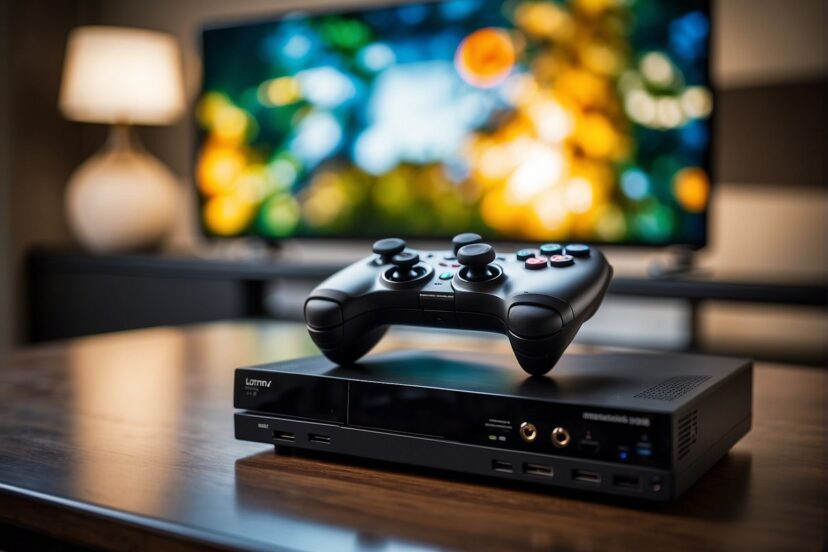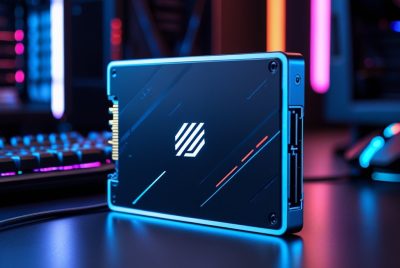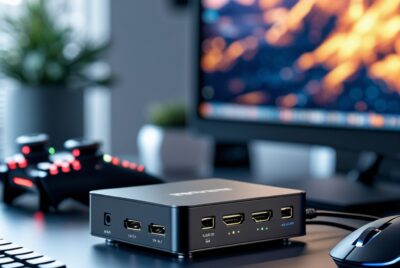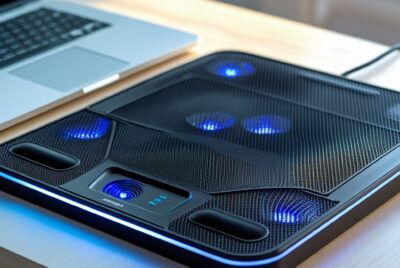Wireless HDMI for Gaming: Cord-Free Visuals
*We may earn a commission for purchases made using our links. Please see our disclosure to learn more.
Wireless HDMI for Gaming: Enhance Your Play with Cord-Free Visuals
In the realm of gaming where reaction times, visuals, and uninterrupted gameplay are paramount, wireless HDMI presents an intriguing solution for those looking to streamline their setup. By eliminating the need for physical cables to connect gaming devices to displays, wireless HDMI transmitters and receivers offer a clean and flexible alternative. They work by converting the HDMI signal to a wireless frequency that transmits data between the source and the display, promising a tidy gaming environment without the loss of image quality.
As a gamer, I understand the initial skepticism that comes with adopting new technologies, especially when it’s about maintaining the integrity of the gaming experience. The advantages of wireless HDMI for gaming are clear: a decluttered space, ease of setup, and the possibility of placing the gaming console or PC at a distance from the display without the hassle of long cables. Additionally, recent advancements in wireless HDMI technology have addressed issues of latency, which is crucial for games that rely on split-second decisions. However, it’s important to acknowledge that there might be limitations as well, depending on the environment and the devices being used.
Choosing the right wireless HDMI equipment is critical. I’m well aware that not all transmitters are created equal, and gaming over wireless HDMI requires a transmitter capable of handling high-definition video with minimal lag. It’s essential to consider factors like the supported resolution, the range of the transmitter, and compatibility with existing gaming hardware. By investigating the specifications and customer reviews, gamers can identify the best transmitters that match their specific needs and budget, ensuring the wireless gaming experience is as responsive and immersive as their wired counterparts.
Understanding Wireless HDMI for Gaming

When I consider Wireless HDMI for gaming, I am aware of its uniqueness and practicality in certain scenarios. Wireless HDMI transmits high-definition video and audio signals without the need for physical cables. Here are some key factors I take into account:
- Compatibility: Most wireless HDMI kits are compatible with standard HDMI devices, but it’s crucial to check for specific resolutions and refresh rates. The majority will support up to 1080p resolution, ideal for console gaming or casual use.
- Latency: When gaming, low latency is critical. I’ve found that wireless HDMI can introduce a slight delay due to compression and decompression of the signal which can affect gaming performance. The latency might not be noticeable in casual gaming, but for competitive scenarios, a direct HDMI cable connection is preferable.
- Transmission Range: The standard range for wireless HDMI is around 30 feet (9 meters). Obstructions like walls can reduce this distance, so for the best results, a clear line of sight between transmitter and receiver is recommended.
- Signal Reliability: The reliability of the signal depends on both the technology used and the local environment. Interference from other wireless devices can affect the quality, so it’s important to ensure minimal interference for a stable connection.
In my assessment, Wireless HDMI can be suitable for gaming when traditional cabling is inconvenient or not feasible, with the caveat that it may not fulfill the requirements of high-performance or competitive gaming, where wired connections are superior.
Top Wireless HDMI Kits for Gamers
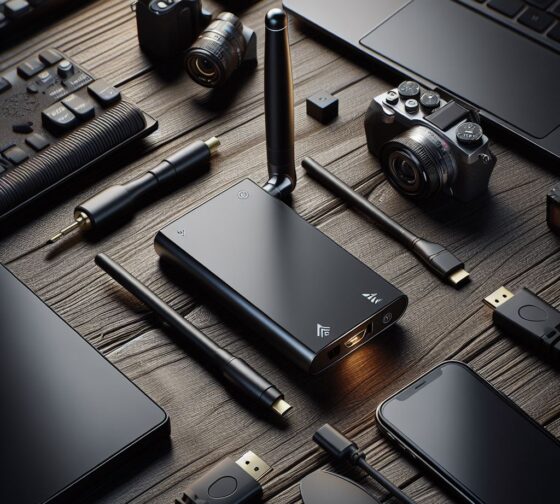
When choosing wireless HDMI kits for gaming, I prioritize low latency to ensure responsive gameplay and long range to accommodate different setups.
Low Latency Kits
Nyrius Aries Home
- Latency: Sub 1-ms delay, imperceptible to the human eye
- Compatibility: Ideal for real-time gaming and high-quality video streaming
IOGEAR Wireless HDMI Transmitter
- Latency: Minimal lag suitable for competitive gaming
- Tech Spec: Supports Full HD 1080p 60Hz content and 3D video
Long-Range Kits
J-Tech Digital HDbitT Series
- Range: Up to 660 feet with clear line-of-sight
- Performance: Reliable signal with Full HD support
Diamond Multimedia Wireless HDMI Extender Kit
- Range: Provides coverage up to 150 feet, even through walls
- Advantages: Plug and play setup, supports 5.1 digital audio and 1080p video
Installation and Setup of Wireless HDMI

Setting up a wireless HDMI system for gaming is relatively straightforward, but it’s crucial to follow the steps carefully to ensure a smooth connection and optimal performance.
Initial Setup
- Identify Components: First, I ensure that I have all the necessary components out of the box, which typically include a transmitter and a receiver.
- Connection to the Source: I connect the transmitter to the HDMI port of the gaming console using an HDMI cable.
- Connection to the Display: The receiver is then connected to the HDMI port of the display device, such as a monitor or television.
- Powering the Devices: I power up both the transmitter and receiver using their respective power adapters.
- Syncing the Devices: I turn on the devices and press the sync button (if available) on the transmitter and receiver to pair them. The pairing process may vary depending on the brand and model.
- Verifying the Setup: After syncing, I check the display to ensure that the video from the gaming console is being accurately transmitted without any noticeable lag.
Troubleshooting Common Issues
Here I address some potential challenges and their solutions:
- No Signal: If the display shows no signal, verify that both devices are powered on and properly connected. It’s important to confirm that the correct input source is selected on the display.
- Video Lag or Stuttering: To resolve video lag or stuttering, check to make sure there are no significant obstructions or interference sources between the transmitter and receiver. Additionally, ensuring both devices support the same resolution and refresh rate is essential.
- Intermittent Connection: For an intermittent connection, try resetting both devices or checking to see if there’s firmware that needs to be updated.
- Compatibility Issues: Regarding compatibility, consult the manufacturer’s instructions to confirm that my gaming console and the display device are supported by the wireless HDMI kit.
By carefully following these setup instructions and troubleshooting tips, I usually manage to establish a stable wireless HDMI connection for a seamless gaming experience.
Maximizing Gaming Performance with Wireless HDMI
To ensure peak gaming performance, my focus is on two critical areas: optimizing my network and managing potential interference.
Optimizing Your Network
Connection Quality: I always ensure that my Wireless HDMI setup is capable of a high-bandwidth transmission. This means it should support at least a 1080p resolution at 60 fps for a fluid gaming experience. For 4K gaming, I would need even higher bandwidth.
Latency: Keeping latency to a minimum is critical. I use devices that operate on the 60GHz frequency band, known for nearly zero latency transmission, which is crucial for real-time gaming responsiveness.
Managing Interference
Physical Barriers: I minimize obstructions between the transmitter and receiver as walls can significantly degrade signal strength. A clear line of sight is ideal.
Frequency Competition: Since devices such as Wi-Fi routers and cordless phones can cause interference, I keep my Wireless HDMI equipment on a separate frequency, such as the less-congested 60GHz band.
Frequently Asked Questions
1. What features should I look for in a wireless HDMI device suitable for high-definition gaming?
To ensure optimal performance for high-definition gaming, I look for a wireless HDMI device with minimal latency, support for at least 1080p resolution at 60Hz, robust interference resistance, and an HDMI 2.0 or higher specification for bandwidth efficiency.
2. How do wireless HDMI transmitters handle multiple receivers and are they effective for gaming setups?
Wireless HDMI transmitters that support multicast capabilities can send signals to multiple receivers, which can be effective for gaming setups with multiple displays. However, it’s crucial to verify whether the device supports this feature without degradation in performance or increased latency.
3. Can I achieve low-latency with a wireless HDMI setup for a seamless gaming experience on my projector?
Yes, you can achieve low-latency with a wireless HDMI setup, provided that the device states low latency as a feature and is specifically designed for real-time applications like gaming. Look for devices promising latency below 5ms for a seamless experience on a projector.
4. What are the compatibility considerations when choosing a wireless HDMI dongle for console gaming, like on an Xbox?
When choosing a wireless HDMI dongle for console gaming on platforms like Xbox, I ensure it supports the console’s output resolution and refresh rate. It should also be HDCP compliant to handle copy-protected content, and it’s wise to confirm device compatibility listed by the manufacturer.
5. Is it possible to get a true 4K 120Hz gaming experience using a wireless HDMI connection?
Although the technology is advancing, currently achieving a true 4K 120Hz gaming experience over a wireless HDMI connection is challenging due to bandwidth limitations. Devices that support HDMI 2.1 with higher bandwidth might come close, but they are relatively new and may not yet fully deliver on this promise.

